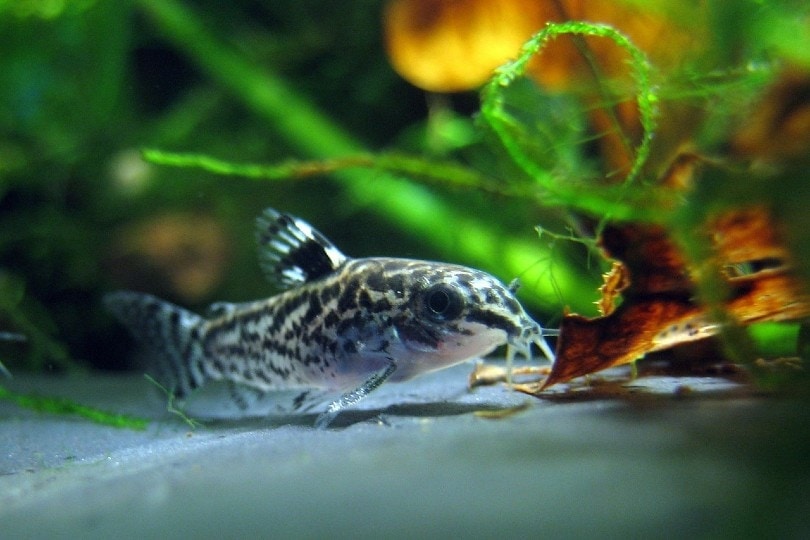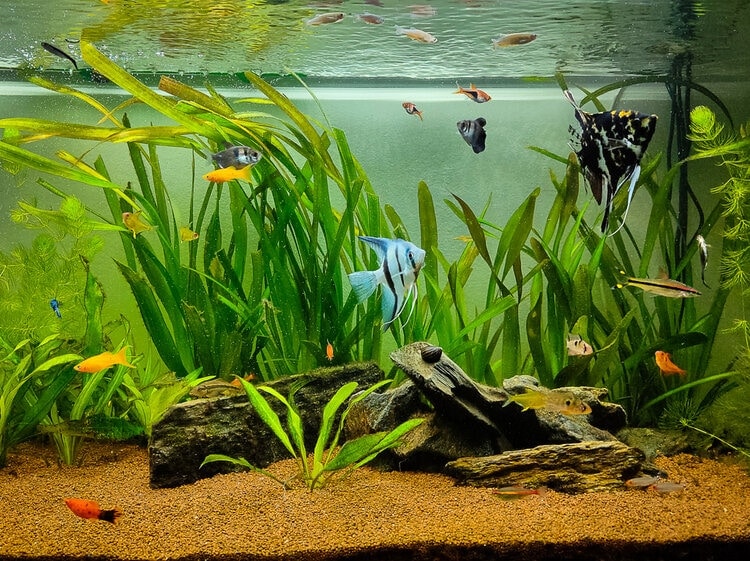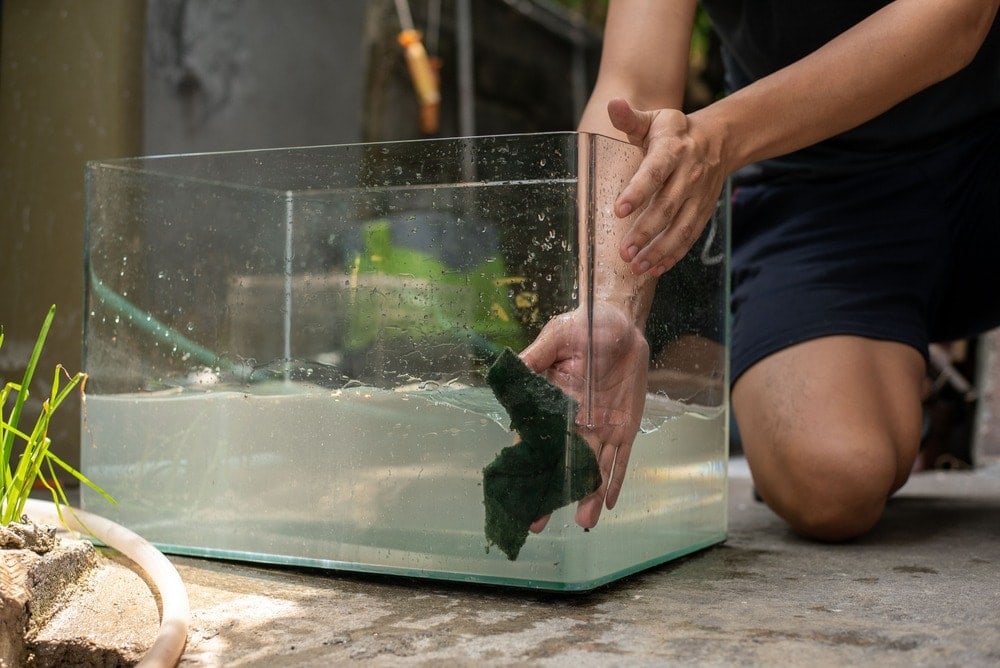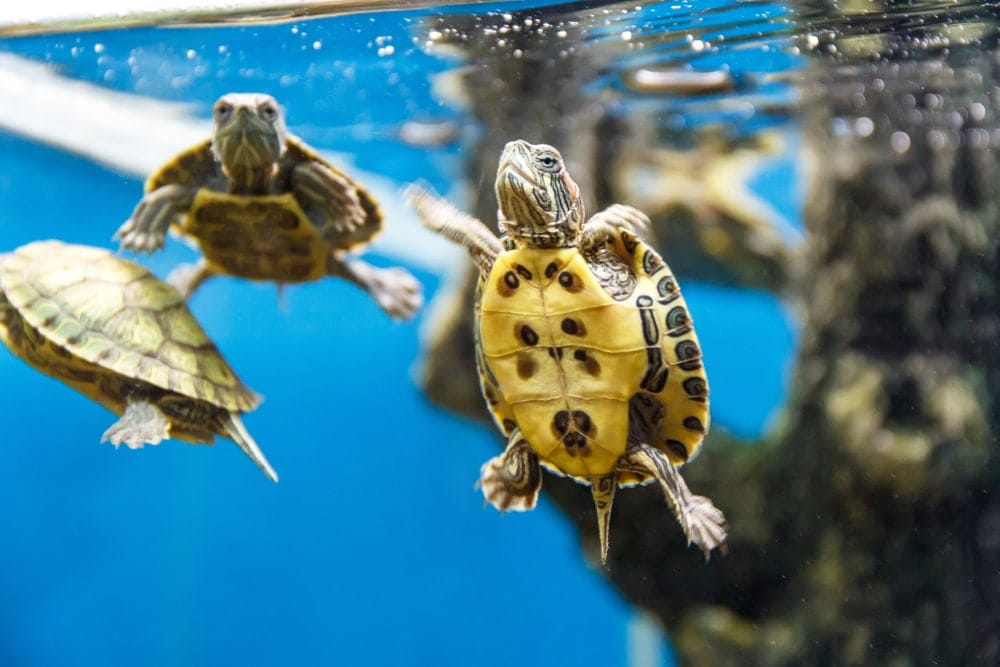3 Best Foods For Corydoras Catfish 2024 – Reviews & Top Picks

Updated on

The corydora is a type of catfish, a bottom-dwelling and bottom-feeding fish that many people love to have in a home aquarium. These guys are often known as armored fish due to their hard plate like exterior. That being said, these guys are actually fairly gentle. However, today we are not here to talk about corydora housing or tank compatibility, but about feeding.
If you have a cory, you want to treat it right and make sure that it is happy. This means feeding it the right foods. So, let’s get to it and go over what we think is the best food for corydoras catfish (this is our top pick) and a quick overview of their diet.
A Quick Look at Our Favorites of 2024
| Rating | Image | Product | Details | |
|---|---|---|---|---|
| Best Overall |

|
Hikari Tropical Algae Wafers |
|
Check Price |
| Best Value |

|
Omega One Shrimp Sinking Pellets |
|
Check Price |
| Premium Choice |

|
Hikari Freeze Dried Tubifex Worms |
|
Check Price |
The 3 Best Foods For Corydoras Catfish
1. Hikari Tropical Algae Wafers
These are great sinking wafers to feed any kind of herbivorous bottom feeding fish. Corydoras are not strictly herbivorous, but most of their diet consists of plant matter, algae, and veggies, which makes these Hikari Algae Wafers more than ideal.
Corydoras are bottom dwellers, which is why these wafers are designed to sink down to the bottom of the tank where your corys live. Moreover, they are ideally shaped for corydora mouths.
These particular wafers are very healthy and only made with the finest of ingredients. The main component here is vegetable matter, which is exactly what your corydoras need to be happy and healthy. They do also contain some protein to even things out a bit, but the majority of the content is plant and vegetable matter.
Hikari Tropical Algae Wafers are perfect for hard to feed bottom feeding fish. They are also designed to be easy to digest.
- Lots of vegetable matter
- Some protein
- Great ingredients
- Will sink down to your corydoras
- Great for picky fish
- Get slimy if left in the water
2. Omega One Shrimp Sinking Pellets
Omega One is well-known for making high quality foods and supplements, and they definitely have not failed to deliver a high quality product with these Sinking Shrimp Pellets. Yes, corys do like their veggies and even algae, but they do also need some protein.
These shrimp pellets are made with the finest of shrimp meal and they definitely contain a lot of protein. They contain more than enough protein to provide your corydora with a well-balanced diet besides the usual plants, veggies, and algae.
Omega One Pellets are actually made with fresh shrimp, which is something that both you and your cory can definitely appreciate. These sinking pellets are specially designed to sink down to your corydoras in order to make them easy to eat.
Something else that stands out about these shrimp Pellets is that they are high in natural fats, which your corydoras need. At the same time, these pellets are really low in ash, plus they are shown to not cloud up your water like other foods tend to do.
Omega One Pellets are also loaded with natural color enhancing substances to make sure that your cory is brightly colored at all times. These things definitely make for a good occasional treat and a supplement so your cories get some protein in their diet.
- Great snack or treat
- Loaded with protein
- Lots of natural fats
- Low in ash
- Don’t cloud the water
- Sink down to your corydoras
- Cannot be used for all feedings, not enough plant matter
3. Hikari Freeze Dried Tubifex Worms
Another good protein rich treat to go with, Hikari Freeze Dried Tubifex Worms make for a great snack and occasional mealtime too. One of the things that is really great about freeze dried foods in general is that they are safe.
Yes, fish love fresh food, but they are often full of bacteria and viruses which you do not want near your fish. The process of freeze drying removes all of these potentially dangerous bacteria and viruses, thus making it perfectly safe for your fish to consume.
Yes, these are Tubifex worms, so they are high in protein, which makes them great for an occasional cory treat, but they are also very rich in vitamins and minerals. Therefore, you can feed these freeze dried worms to your corydoras fairly often because they are loaded with vitamins and minerals which they would otherwise get from plant matter. These vitamins are shown to reduce stress and reduce the chances of contracting or suffering from diseases.
At the same time, the ingredients used here are also shown to help increase the brightness and coloration of various fish. Only the best and highest quality of ingredients are used here, which is something that both you and your corydora can appreciate.
Hikari Tubifex worms are also shown to not cloud the water, a problem that often arises with other foods. This food is nitrogen charged which is useful because it helps to stop oxidation when the Hikari Freeze Dried Tubifex worms are opened.
- Very rich in protein
- Lots of minerals and vitamins
- Won’t cloud the water
- Convenient cubes
- Free of parasites and bacteria
- Nitrogen charged
- Some fish seem to dislike them
 Corydora Feeding Information
Corydora Feeding Information
In all reality, corydoras are not very picky eaters nor are they hard to feed. Corydoras are bottom feeders and they love to scavenge. When it comes to keeping your tank clean, besides the filter and regular water changes, corydoras do a great job at cleaning up your tank.
What Do Cory Catfish Eat?
When it comes to corydoras food, they will eat many different plants, they love to eat algae, and they tend to eat all manner of food which other fish have left around. They are definitely not picky. Lots of people simply let their corydoras eat leftovers as they seem to be perfectly happy doing so. That being said, while corydoras are technically omnivores, they are mostly herbivorous.
This could be because most of the food they come across is plant based or simply because they like plants and veggies more. Either way, most of their diet consists of plants, algae, and if possible vegetables. Corydoras are classic overeaters, so you do need to control how much you feed them. Ideally, you should feed them once per day and not let them eat more than they can consume in a 5 minute window.
When it comes to feeding, if you are going to be using some kind of flake, pellet, or wafer, make sure that it is of the sinking variety so it will actually make it down to your corydora.
You can feed them herbivorous foods and omnivorous foods, in terms of pellets. Also, adding in some treats like freeze dried brine shrimp or tubifex worms will be greatly appreciated. As well, a variety of blanched veggies will be appreciated too.
 FAQ
FAQ
How To Feed Cory Catfish?
The cory catfish diet includes various different types of food. This can include fish flakes and fish pellets, as well as bottom feeder pellets too.
These fish are scavengers and they do often eat all sorts of leftovers, but their diet cannot consist of just this. Some high quality bottom feeder food is recommended.
Feed them once per day, and no more than they can eat in about 5 minutes. Any more than that, and you will be overfeeding your cory catfish.
Can Cory Catfish Eat Betta Food?
Yes, the beauty about cory catfish is that they are not picky eaters, they are scavengers, and they are omnivores too. They will eat mostly anything that they can wrap their mouths around.
Therefore, yes, a cory catfish can indeed eat betta food. Betta food is fairly high in meat protein, which is fine for cory catfish, as long as they also get a decent amount of plant matter in their food, which they will probably get just due to the fact that they are bottom feeders.
Do Cory Catfish Eat Algae Wafers?
Cory catfish, while they are bottom feeders, are not known to eat algae. They will on occasion munch on some of it, but in the grand scheme of things, they are not a fan of algae, such as suckerfish for example. Therefore, no, cory catfish will not eat algae wafers.
Do Cory Catfish Eat Fish Poop?
Cory catfish, on occasion, have been known to try and eat some fish poop, but by and in large, no, they do not eat fish poop.
It does not taste good and has absolutely no nutritional value.
Do Cory Catfish Clean Up The Tank?
Cory catfish do clean aquariums to a certain extent. They are scavengers and enjoy eating leftovers, which means that they will often eat uneaten food and plant matter too.
However, unlike snails or suckerfish, they don’t go around cleaning glass or eating algae. It’s like a half hearted tank cleanup.
Conclusion
The bottom line is that any of the above products make for top contenders in our opinion when it comes to the best food for Cory Catfish (Hikari Wafers are our top pick). As long as you meet their feeding requirements and make sure that they have a well-balanced diet, they will be just fine.
Feature Image Credit to Alice_Alphabet, Pixabay
















